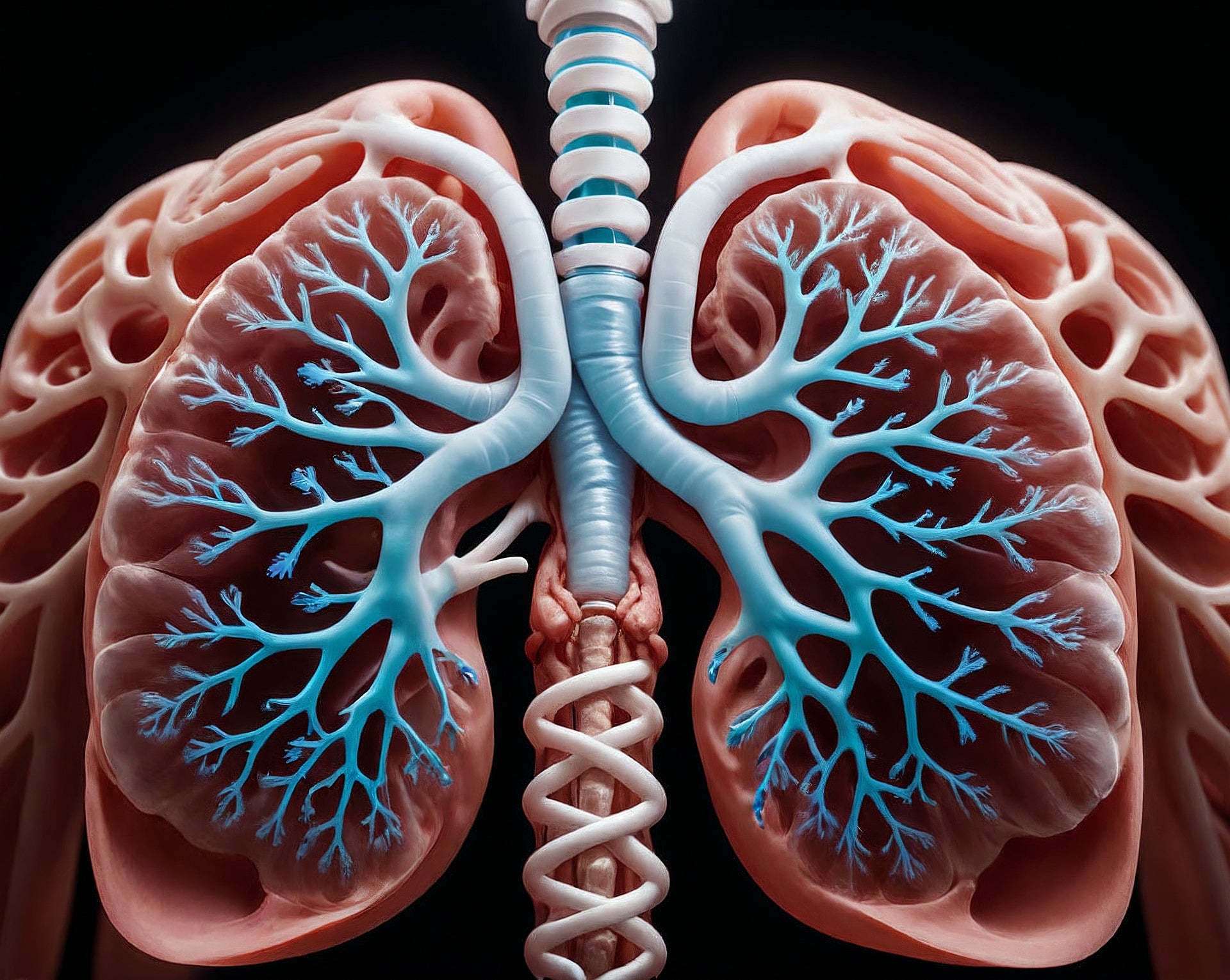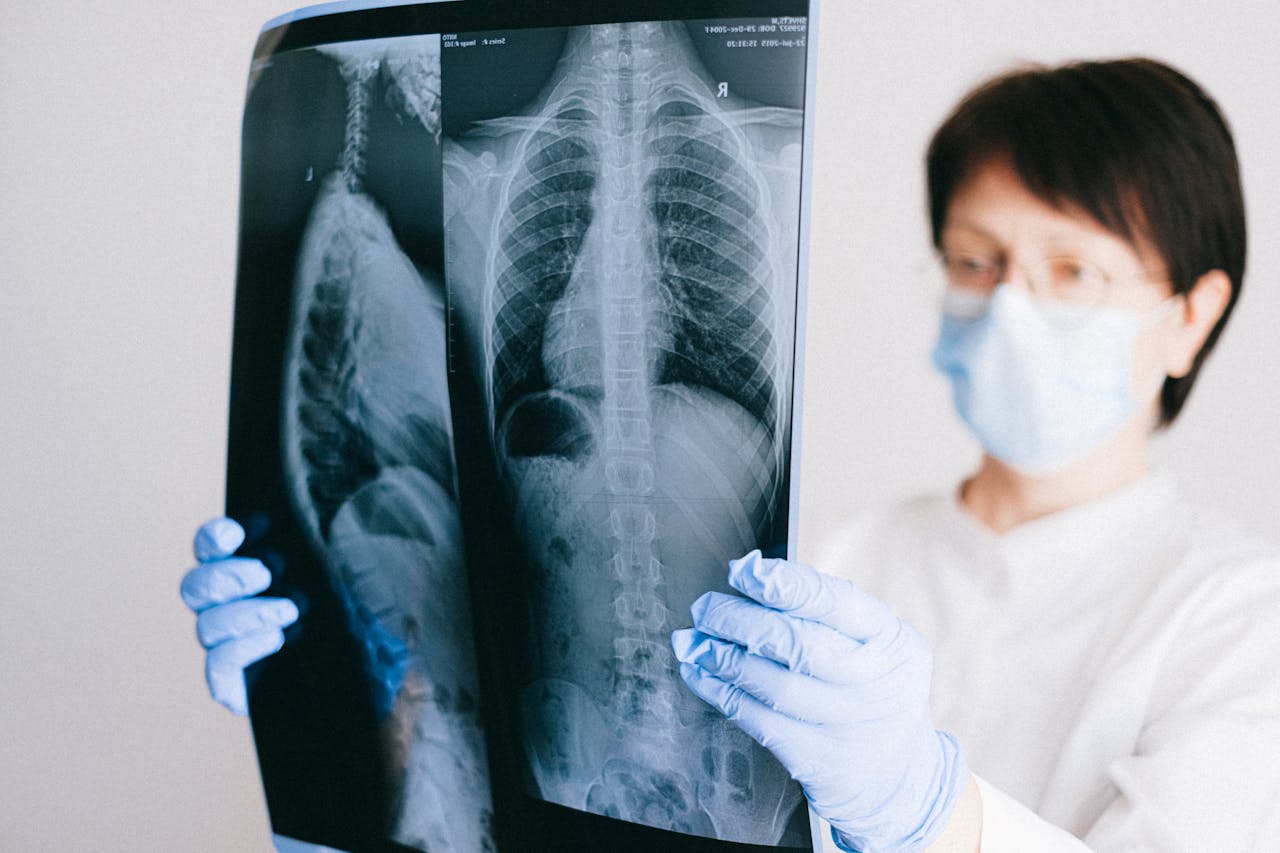Is lung collapse dangerous? Also known as pneumothorax, lung collapse occurs when air leaks into the chest cavity due to damage in the lung tissue. The air filling the chest cavity creates pressure, causing the lung to collapse and significantly reducing breathing capacity.
This condition, often presenting with sudden chest pain, may also exhibit other symptoms. A large air leak increases the pressure in the chest cavity, worsening symptoms. If left untreated, serious consequences may arise. In the continuation of this article, you will find a detailed answer to the question, “Is lung collapse dangerous?”
What is Lung Collapse (Pneumothorax)?

Lung collapse refers to the accumulation of air between the lung and the chest wall. The collected air partially or completely collapses the lung. This inability of the lung to fully expand adversely affects respiratory functions, decreasing oxygen intake. Pneumothorax can cause severe breathing problems and, in some cases, pose a life-threatening risk. This is, in essence, an answer to the question, “Is lung collapse dangerous?”
The lungs are covered with a thin membrane called the pleura, which allows the lung to attach to the chest wall and function effectively. In healthy individuals, this membrane space contains no air and only a minimal amount of fluid. However, if an air leak occurs for various reasons, this space fills with air, preventing the lungs from expanding and functioning normally. This condition is known as pneumothorax. The severity of its impact and the answer to whether lung collapse is dangerous depend on the size of the air leak.
Pneumothorax can be categorized into different types based on its cause. Details of these types are shown in the table below:
| Type | Description |
|---|---|
| Spontaneous Pneumothorax | Also called primary pneumothorax, it occurs without an underlying known cause. It is common in tall, slim, healthy, dark-haired males aged 20-25 years. Smoking increases its likelihood. |
| Secondary Pneumothorax | Occurs due to an underlying condition such as pneumonia, lung cancer, emphysema, or tuberculosis. The weakened lung tissues increase the risk as air leaks into the chest cavity from these thin spots. |
| Iatrogenic Pneumothorax | Occurs due to medical procedures. |
What Causes Lung Collapse?
There are various causes and risk factors for lung collapse, including:
- Rupture of air sacs (bullae) on the lung surface
- Conditions like COPD and tuberculosis causing thinning of lung tissue
- Physical characteristics (e.g., tall, slim males)
- Chest trauma
- Rib fractures
- Errors during surgical procedures
- Congenital anomalies like CCAM
- Smoking
Additionally, it is more commonly observed in males than females. These causes and risk factors are key elements in answering whether lung collapse is dangerous.
What are the Symptoms of Pneumothorax?
 Symptoms of lung collapse cause significant discomfort and appear suddenly. These symptoms include:
Symptoms of lung collapse cause significant discomfort and appear suddenly. These symptoms include:
- Sudden onset chest and back pain
- Cough
- Shortness of breath
- Wheezing
- Increased heart rate (tachycardia)
- Cyanosis (skin discoloration)
- A feeling of fullness in the chest area
Symptoms vary depending on the severity of pneumothorax. However, most cases begin with persistent chest pain and shortness of breath.
Patients experiencing these symptoms are usually diagnosed through chest X-rays.
How is Lung Collapse Treated?
Treatment depends on the answer to the question, “Is lung collapse dangerous?” Factors considered include symptoms, the extent of pneumothorax, the patient’s medical history, and any chronic conditions. After a thorough evaluation, the treatment method is decided.
Some cases do not require medical intervention, and patients are monitored. In other cases, the following treatments are applied:
- Removing air from the chest cavity using a special syringe
- Inserting a chest tube
- Surgical intervention
The method to be applied is determined entirely depending on the case. However, in people who have not had the disease before, the method of inserting a drain tube is preferred more. While approximately 80% of cases in which a drain tube is inserted for the first time recover, the disease recurs in 20%. When a chest tube is inserted for the second time in these patients, the probability of recurrence is 50%. Therefore, the question of whether lung collapse is dangerous is more important for cases in which the disease recurs. In addition, the possibility of surgery is higher in these people.
In pneumothorax treatment performed with a surgical procedure, the probability of the disease recurring is between 3% and 5%. Although surgery is an effective method, it is not the first choice in treatment. A decision to perform surgical intervention is made only in the following cases:
- Pneumothorax occurring simultaneously in the right and left lungs
- A second occurrence of the disease after the first treatment
- Notice of large balloon sacs in the lungs
- Lungs not returning to normal after 5 days despite the insertion of a chest tube
- Those living far from health institutions
- Those with occupational reasons (pilots, divers, etc.)
In such cases, surgical methods are used. The answer to the question of whether a collapsed lung is dangerous is also given by choosing surgery in patients who cannot quickly apply to health institutions. Because in the event of an air leak, delaying treatment can lead to life-threatening risks for patients.
How is Pneumothorax Surgery Performed?
Pneumothorax surgery is performed to insert a drain tube or to remove (treat) the damaged area. To insert a drain tube, the area between the 7th and 8th ribs is opened and a silicone drain is inserted into the chest cavity. On the other side of the drain, there is a tube with water inside. Thus, while the air is drained, air is prevented from entering the chest cavity again. In cases where the chest tube does not give the desired result, the problematic area is removed with the closed method and the remaining lung tissue is glued and the problem is permanently resolved. In the closed method, only a 2 cm incision is made. However, in some cases, it may be necessary to convert to open surgery. The probability of converting to open surgery is at a level of 2%.
The doctor’s experience is critical for the success of the procedure. Prof. Dr. Semih Halezeroğlu draws attention with his experience and expertise at this point. You can contact us for other details on surgical methods in the treatment of pneumothorax and whether lung collapse is dangerous.
Is Lung Collapse Dangerous?
 The answer to the question “Is lung collapse dangerous?” is unfortunately “yes.” Because when pneumothorax occurs, there is a serious decline in respiratory function. Depending on the size of the affected areas, shortness of breath and chest pain are experienced severely. If the necessary interventions are not made quickly, lung collapse can lead to negative consequences such as death. Therefore, early diagnosis and appropriate treatment are of vital importance.
The answer to the question “Is lung collapse dangerous?” is unfortunately “yes.” Because when pneumothorax occurs, there is a serious decline in respiratory function. Depending on the size of the affected areas, shortness of breath and chest pain are experienced severely. If the necessary interventions are not made quickly, lung collapse can lead to negative consequences such as death. Therefore, early diagnosis and appropriate treatment are of vital importance.
In What Cases is a Collapsed Lung Dangerous?
How Many Days Does It Take to Heal from a Collapsed Lung?
Surgery may require the insertion of a drain tube. If only a chest tube is inserted, patients stay in the hospital for 3 days. In closed surgery, this period is 2-3 days, and in open surgery, it is 4-5 days. Patients discharged from the hospital spend the first days resting. If no other complications occur, these patients return to their normal routines in 2 weeks, provided that they avoid heavy and tiring work.
Frequently Asked Questions About Lung Collapse
Frequently asked questions and answers about whether lung collapse is dangerous are listed below.
1 – Is Lung Collapse Fatal?
Sudden pneumothorax in both lungs can be fatal. Immediate intervention is crucial in such cases.
2 – Who is at Risk of Lung Collapse?
It is more common in tall, slim, dark-haired males. Individuals with chronic respiratory conditions, smokers, and those with a family history of the condition are at higher risk.
3 – Can Pneumothorax Heal Without Surgery?
In some cases, close monitoring suffices. However, most cases require chest tube insertion or surgical removal of the problematic area. For further information, contact a specialist.
4 – Can Lung Collapse Heal?
With the right treatment, pneumothorax heals and patients return to their normal lives. It should not be forgotten that in some cases, there is a risk of recurrence after treatment.
5 – Can Pneumothorax Heal Without Surgery?
Depending on the size of the pneumothorax, some patients prefer follow-up instead of treatment. However, in a significant number of patients who require treatment, the insertion of a drain tube or the removal of the problematic area is performed with a surgical procedure.



